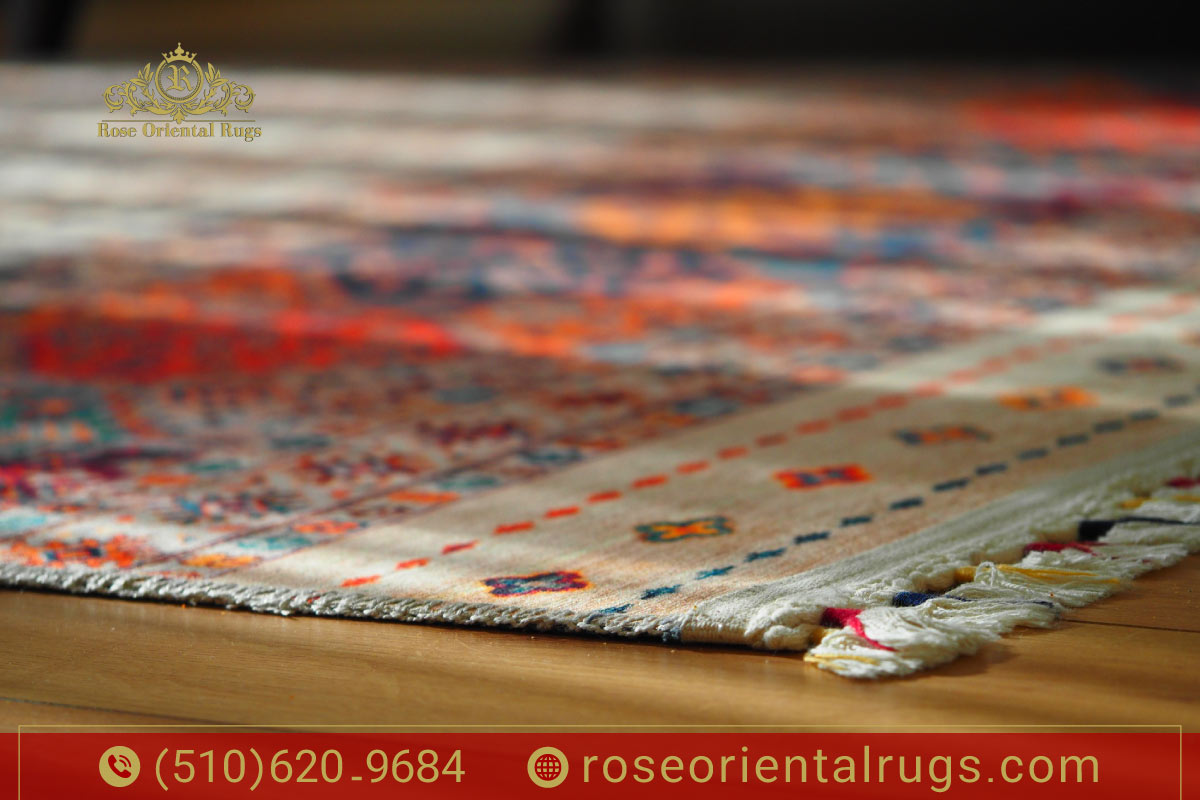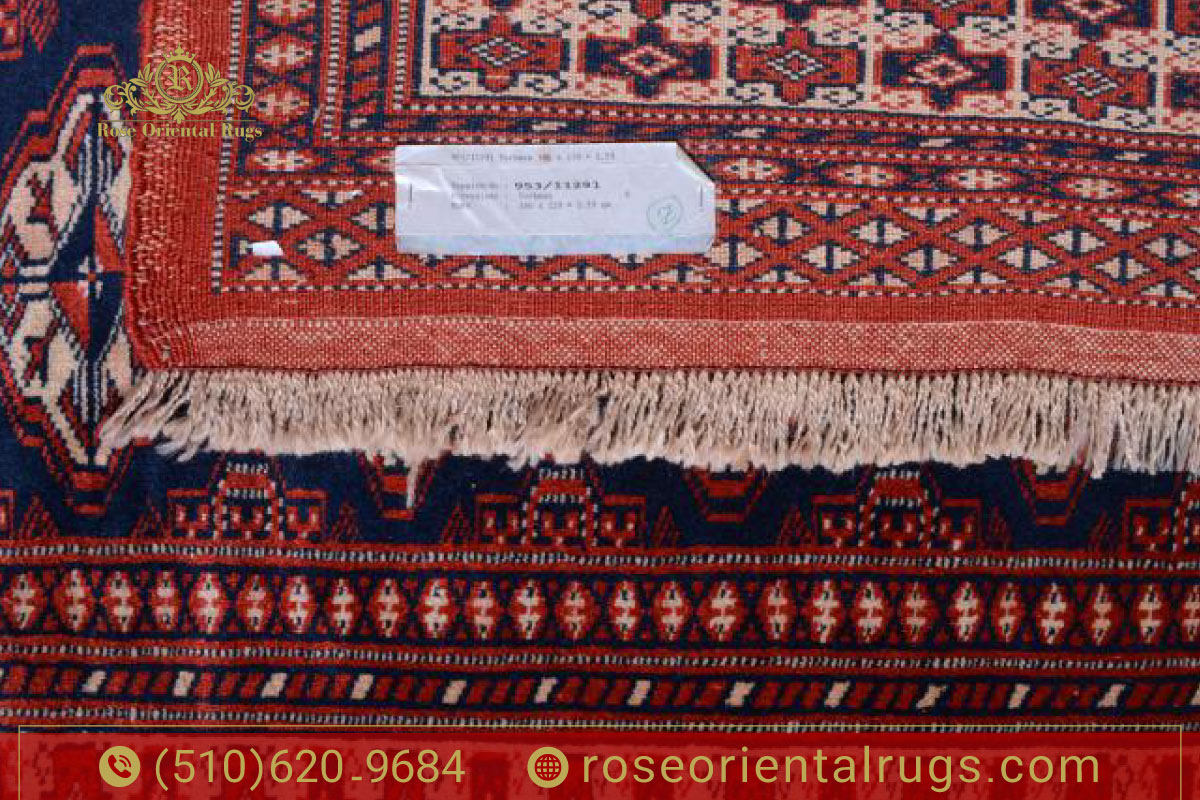How Humidity Affects Oriental Rug Fibers

Understanding how humidity affects oriental rug fibers is essential for preserving the beauty, strength, and value of these timeless works of art. Oriental rugs are typically hand-made from delicate natural fibers like cotton, silk, and wool, which can be very sensitive to indoor climate conditions. With a significant increase or decrease in humidity, the rugs are likely to undergo fiber degradation, color loss, warping, and mold, which may occur only after extensive degradation.
Here, we’ll discuss the specific ways in which humidity affects rug fiber integrity, the particular issues associated with high and low humidity, variations in these problems by fiber type, along with prevention and maintenance tips and expert advice for prolonging the life of your investment for generations to come. We’ll then provide referrals for Berkeley’s best oriental rug cleaning.
Why Humidity Matters for Oriental Rugs
One of the first steps to understanding how humidity affects oriental rug fibers is recognizing that these rugs are crafted from organic materials that respond to their environment. Wool, silk, and cotton—the raw materials of choice in Oriental rugs—are hygroscopic, meaning they absorb and release water according to the surrounding air.
When the humidity is in equilibrium (ideal around 40%–60%), the rug fibers are firm, supple, and resilient. However, in highly humid or extremely dry atmospheres, the fibers also undergo physical and chemical alterations. Being constantly exposed to the wrong conditions can degrade the rug’s support system and cause irreparable damage. For instance, in damp weather or poorly ventilated rooms, water penetrates the rug, causing rot and mold growth. In arid conditions, however, fibers become brittle, leading to shedding, fading, and cracking.
How Humidity Physically Affects Rug Fibers
To fully understand how humidity affects Oriental rug fibers, it is helpful to examine the science behind the behavior of these fibers. Natural rug fibers have a cell structure that swells when they take up water and shrinks when they dry. Repeated swelling and shrinking exert pressure on the fibers, knots, and backing of the rug.
Wool
Wool fibers absorb up to 30% of their own weight in water without being damp. They swell in humid surroundings, resulting in an open construction, buckling, and distortion of the rug’s shape. Wool shrinks when humidity suddenly decreases, which can cause cracking on the surface and a grainy texture.
Silk
Silk is very susceptible to moisture. Excessive humidity will cause the silk fibers to lose their sheen, become structurally compromised, and become water-stained. Silk rugs exposed to high moisture also run the risk of bleeding colors.
Cotton
Cotton is extensively used on rug backing and warps. Cotton fibers are highly absorbent and retain water over extended periods, creating an ideal environment for mold and mildew in high-humidity conditions. Such physical changes accumulate over time, and if humidity is not controlled, even the best oriental rugs degrade much more quickly than anticipated.
Effects of Excess Humidity on Oriental Rugs
When evaluating how humidity affects oriental rug fibers, excess moisture is one of the most damaging factors. Over-humidification may be attributed to coastal conditions, basements, kitchens, bathrooms, or inadequate indoor ventilation.
Some typical issues that follow as a result of excess humidity:
- Fungal Development and Mildew: The wet climate serves as a breeding ground for fungi, which develop musty odors, discoloration, and degradation of building fibers.
- Fiber Weakening: Continuous exposure to water makes wool and silk fibers weak and prone to wear and tear.
- Color Bleeding: Handmade rugs, particularly those dyed with natural dyes, may bleed if there is excessive water, such as in silk or vegetable-dyed rugs.
- Buckling and Warping: When the fibers swell, the rug becomes uneven, losing its flat shape and taking on waves or ripples.
Rugs laid over concrete floors or in moist rooms are most likely to develop these issues. Moisture must be avoided to preserve the rug’s integrity.
Effects of Low Humidity on Oriental Rugs
Just as excessive moisture can be detrimental, the impact of humidity on Oriental rug fibers in overly dry conditions is also a significant concern. During seasons or areas of extreme indoor heating, such as winter, humidity can fall to levels that dehydrate fibers to the point of complete desiccation.
Typical issues caused by low humidity:
Brittle Fibers: Dehydrated silk and wool fibers are brittle and prone to snapping when subjected to pressure, resulting in the shedding or breaking of the pile.
- Cracking Foundations: Cotton wefts and warps become stiff and crack, resulting in structural weakening.
- Color Fainting: Dry air will enhance the color loss of natural colors, especially when combined with direct sunlight.
- Static Electricity: Rugs, under arid conditions, can generate static charges, which, over time, can destroy sensitive fibers.
Low-humidity damage builds slowly and can be easily missed until extensive fiber deterioration is apparent. Using humidifiers during the dry months of the year is an excellent means of prevention.
Fiber Type Sensitivity to Humidity
Another critical factor in understanding how humidity affects oriental rug fibers is the type of fiber used. Various materials respond differently to changes in humidity.
- Wool Rugs: Most resilient, but remain vulnerable to mold and shrinkage if conditions are extreme.
- Silk Rugs: High-quality ones, but extremely sensitive; excess humidity softens the fibers, while a deficit turns them crumbly.
- Cotton Foundations: Absorbent and mold-prone; critical to manage humidity to prevent destroying foundations.
- Blended Fibers: Some new oriental-type rugs utilize blends that respond differently; however, humidity is still required to manage to ensure longevity.
Knowing the fiber composition of your rug enables you to tailor humidity control and cleaning methods more effectively.

Climate and Geographic Considerations
Regional climate plays a significant role in how humidity affects oriental rug fibers. Residential owners in coastal areas or high-humidity urban areas have issues that vary from those in dry areas.
- Humid Climates: Home rugs by the coast or near lakes usually experience naturally high humidity. Rugs here require top-quality ventilation, regular airing, and perhaps dehumidifiers.
- Dry Climates: Homes in low-humidity desert or mountain regions require humidifiers to maintain the flexibility of their fibers.
- Seasonal Changes: In warm, humid summers and cold, dry winters, rugs experience alternating expansion and contraction, which tends to accelerate wear.
Maintaining indoor humidity levels within the optimal 40–60% range year-round is the most preventive action.
Preventing Humidity Damage to Oriental Rugs
Once you understand how humidity affects oriental rug fibers, you can take proactive steps to prevent damage. Best practices:
- Use Humidifiers and Dehumidifiers: Utilize them to maintain a healthy balance of indoor humidity throughout the year.
- Increase Ventilation: Open windows or use fans to enhance airflow and drain out moisture accumulation.
- Keep Damp Areas Away: Place rugs away from bathrooms, kitchens, basements, and concrete floors without vapor barriers.
- Rotate Rugs: This prevents uneven exposure to light and humidity, ensuring a more even distribution of wear and tear.
- Use Rug Pads: Pads act as a buffer between floors and rugs, enhancing airflow and inhibiting excessive moisture buildup.
Preventive measures are always preferable and more economical than repairing extensive damage caused by humidity.
Professional Cleaning and Maintenance
Even with excellent humidity control, professional care plays a crucial role in managing how humidity affects the fibers of Oriental rugs. Over time, moisture, dirt, and dust can accumulate deep in the fiber beyond the scope of regular vacuuming. Why professional treatment matters
- Deep Cleaning: Removes moisture-holding impurities and mold spores.
- Inspection: Professionals catch early signs of damage from humidity before it’s too late.
- Specialized Treatments: Professionals use fiber-specific cleaners and drying techniques to guarantee no more moisture problems.
- Repairs: Frayed edges, loose weaves, or bleeding dye can generally be repaired if caught early.
Regular professional cleaning every 12–18 months, along with home upkeep, is the ideal protection for an oriental rug.
Conclusion: Protecting Your Rugs with Expert Help
As we’ve explored, how humidity affects oriental rug fibers is a critical factor in maintaining their beauty, texture, and value over time. Excessive water is responsible for mold, warpage, and dye bleeding, whereas low humidity results in brittleness, cracking, and fading. The conditions depend on the fiber type, geographic location, and seasonality, so controlling humidity and maintaining rugs is of utmost importance to all rug owners.
Maintaining optimal indoor humidity levels, cleaning thoroughly, and scheduling regular professional inspections are key to ensuring your Oriental rugs last for generations. Berkeley residents who require skilled services can rely on Rose Oriental Rugs in Berkeley as the premier rug cleaning and repair service in the region. They have Asian rug experts with specialized cleaning, restoration, and maintenance services to ensure your precious items remain in optimal condition throughout the year.

